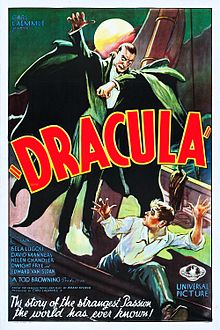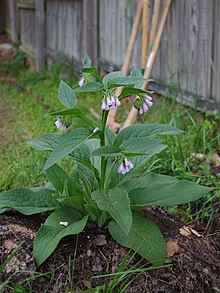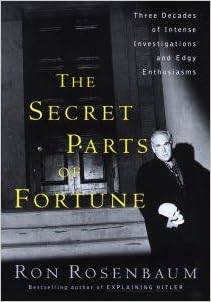"Be fearless… The world is filled with people who will be more than willing to give you self-defeating, negative advice. If you have a dream, the single most important question you must ask yourself is—how can you fulfill that dream? If your resources are very limited, that is not an excuse."
...Walter Reuben, writer-director of the award-winning film, The David Whiting Story
 |
| Walter Reuben winning the L.A. Film Critics Award |
I'm pretty sure most writers (me included) have a lurking fantasy of seeing our work on the silver screen one day.
However, most of us figure screenwriting is even harder to break into than book publishing because of the financial investment involved. Besides, everybody and their grandmother is writing a screenplay. So the chances of fulfilling that dream are slim to none...right?
Not if you know the story of Walter Reuben, winner of the prestigious
L.A. Film Critic Association's Douglas Edwards award for his indie film
The David Whiting Story.
When he received his award on January 10th, 2015, Walter shared a stage with people like
Angelina Jolie, Wes Anderson, and Patricia Arquette. The Douglas Edwards award has previously gone to the likes of Jean-Luc Godard and Gus Van Sant.
Walter is right about the negative advice. Go to any writing blog and you'll be presented with tons of scary rules.
- Follow the conventions of your genre. Don't color outside the lines.
- Limit the number of characters and subplots. Don't make anything too complicated.
- Tell the story in linear time. Don't confuse your reader with lots of jumping around in time and place.
- Kill your darlings. Whatever you think is clever and innovative, most people will hate.
- Forget the literary stuff. Anybody who drops references to Henry James is NOT going to have a career as a writer. Get yourself a job teaching literature in a nice stuffy prep school.
I admit I've given some of that advice myself. I know from experience that it's tough to get anything
 |
| Haverford College, where Walter Reuben met David Whiting |
literary, quirky, or rule-breaking in front of the public, and it's even harder to get recognition for it. I've learned the hard way that unless you're a regular contributor to
The New Yorker, you'll have a lot better chance of making a living if you stick to writing thrillers, romances and mysteries and forget about the cerebral stuff.
So let me introduce you to the man who proves us all wrong.
Walter Reuben has had his shorter screenplays produced in the past, but last year marked the debut of his first feature film:
The David Whiting Story,
Oh, and did I mention that Walter is sixty-nine years old?
Yes, you read that right. Walter is nearly seventy. Until last year, he had never made a feature film, although filmmaking has always been one of his passions.
His story is one of persistence, grit, and the triumph of quirky artistic vision. It's a story to inspire writers everywhere, no matter what their age.
 |
| Pembroke Hall at Bryn Mawr, where Anne met David Whiting |
I don't actually know Walter, except online, although we think we probably met in person a very long time ago. We went to college together. That is, he was an upperclassman at Haverford when I was a freshman at Bryn Mawr. They're sibling schools. (And yes, I'm outing myself as a geezerette.)
Like me, Walter once befriended a strange, compelling, tragicomic young man named David Whiting, who later died under mysterious circumstances on the set of the Burt Reynolds film
The Man Who Loved Cat Dancing, in 1973.
Walter and I met again online this year because we both recently created works of art that addressed David Whiting and his mysterious story.
A prep school classmate of David's who had read my book about David,
The Gatsby Game, phoned me to ask what I knew about the real David. He dropped a remark about an upcoming film called
The David Whiting Story written by somebody named Walter Reuben.
 |
| Anne at Bryn Mawr during her Goth period |
That was the first I'd heard of the film, so I Googled Walter and friended him on Facebook (see, social media is good for something!) We started an email exchange. He sent me a link so I could watch the film online.
A few months later, I saw the news that he'd won the Los Angeles Film Critics Award. He was over the moon. He says he's still reeling from the "surreal" experience, but I talked him into doing an interview for this blog. (Although he's hard at work on his next feature film.)
The David Whiting Story continues to get kudos. It was recently listed as one of
"The Best Films Not Yet Showing at a Theater Near You"
NOTE:
This interview first ran on my writing blog in January of 2015.
***
Anne
Thanks, for visiting, Walter!
I know that I've wanted to write about David Whiting pretty much ever since I heard about his death. Maybe even before. He was such a quirky, over-the-top character.
The news accounts of David's death never made sense to me. I felt I knew a lot more about him than anybody who was writing about him.
What about you? Have you had this story at the back of your mind for a long time?
Walter
Not at all. After I knew David in college, I lost touch with him. Although the news of his death was a scandal, which got reported in the media, I did not read about it at the time, and was not even aware of his death.
(Walter probably avoided supermarket tabloids, which was where much the story played out. It has been called one of "The 10 Most Notorious Sex Scandals in Hollywood History."...Anne )
However, in 2007, I went on vacation, and one of the books which I chose to take with me was a collection of essays by Ron Rosenbaum. I read a number of essays, one of which was about David and the curious circumstances of his demise in Sarah Miles' hotel room, during a film shoot.
(Ron Rosenbaum's book is called The Secret Parts of Fortune and the David Whiting essay is titled "A Corpse as Big as the Ritz: in Which we Encounter Sarah Miles, Burt Reynolds and the Ghost of the Great Gatsby"...Anne.)
When I read the essay, it did not even occur to me that the fellow being described was the same David Whiting with whom I had gone to college. Apparently, David at some point claimed to be (or to have been) an undergraduate at Harvard, not Haverford College (which he actually attended with me, however briefly on his part).
David, clearly, was very "flexible" with the facts of his life, and he may have thought that Harvard would be a more impressive alma mater.
(He told me he was a Princeton student on an exchange program. He was obviously obsessed with the Ivy League...Anne.)
But that is one reason why I did not immediately realize that the subject of this essay was my old college acquaintance. But, somehow, the essay nagged at me, and, a few years later, I revisited it, and found an ancient 1966 diary of mine. It contained a couple of brief references to David Whiting—which confirmed my suspicion that the college David of 1966 was the fellow written about in the essay.
Anne
When did you decide to make David Whiting's story into a film? And how long did it take from concept to wrap?
Walter
Three years ago, I was visiting Austin. I had spent almost twenty years of my life there and had made my earliest experimental short films there, in the 1980's. I had not been there in 20 years, and I was having dinner with one of my oldest friends, a person who shares my passion for film.
Somehow, I got to bringing up the story of David Whiting, his mysterious death, and Sarah Miles. My friend was very familiar with the entire business.
Somehow, I blurted out that I was going to make a movie about Sarah Miles and Ayn Rand. I, honestly, have no idea how this idea arose. It was spontaneous, and came from something very intuitive inside me. He smiled and said some encouraging words, because, earlier in the dinner, he had remembered fondly my early short movies.
That dinner was in April, 2012. The film wrapped in July, 2013.
Anne
I love stories of people who get ideas when speaking them out loud to somebody else like that. It has happened to me and it always feels sort of magical. I go..."did I really say that? I guess I'll have to do it, then." But I'm not always brave enough to follow through.
So what gave you the courage—at an age when most people are happily settling into retirement—to make a feature film?
Walter
Why not? There are various examples, especially in late 20th Century British literature, of writers who only started to write, or at least to publish, at what some consider to be an advanced age.
As for "happily settling into retirement," for whom is that really true? If you utterly love what you do, why would you want to retire? Of course, if you hate what you do, then you cannot wait for an unhappy career to be over.
As for F. Scott Fitzgerald's famous dictum that "there are no second acts in American lives," well, I simply beg to disagree. I have started what is for me a third act, and I am loving it.
I read earlier today about a film director who made his first feature at the age of 20. I do not know this man's movies, but, truly, I say—more power to anyone of any age who wants to make movies, and who finds a way to fulfill his or her dream!
Anne
I love your positive attitude, Walter!
You met David Whiting when he was a freshman, and I didn't get to know him until he was an upperclassman. I met him as a wannabe-ladies' man who had recently worked as a still photographer on the sets of several high-profile films where he had hobnobbed with the likes of Roger Vadim and Jane Fonda (or so he claimed.)
But in spite of his obvious phoniness, I liked the guy. I found him compelling. Maybe it was his intelligence, or maybe it was that desperate emotional neediness just under his veneer.
You met him when he was a pudgy kid right out of an upper-crust prep school, so we met quite different versions of the man.
Do you want to talk about what qualities drew you to David when you met him, and how you got to know him?
Walter
I did not know him terribly well. As depicted in my film, the 18-year old David Whiting was a con artist, a thief, and a pretentious poseur. The movie portrays the fact that he offered to help me sell tickets for a college film society screening which I had organized—and then, after, tried to get me to steal some of the money.
Anne
That is a memorable scene in the film. My fictional version of David, Alistair Milborne, is a thief, too, although I had no evidence the real David actually stole. But everything he did seemed dishonest in some way.
But all in all, David Whiting is something of a tragic figure. And it's always sad when a person dies at the age of twenty-four.
Your film is essentially a comedy—although certainly a pitch-black one. My novel is a dark comedy as well.
Why do you think his story sparks a comic reaction rather than a sentimental one?
Walter
David's is the story of someone who wears multiple masks, who doesn't really know who he is, and goes out of his way to tell a different falsehood to everyone he meets. Black comedy, not tragedy, is my forte.
But there is no reason that his story could not be told in more purely dramatic terms. However, I think that it would be very difficult to prevent a purely dramatic rendering from falling into melodrama.
Anne
I agree that falling into sentimentality the way they do on those true-crime TV shows would ruin the story. Phony people do seem to be intrinsically funny. Without liars, comic writers would run out of material pretty fast.
What else do you want to tell us about David Whiting in your film? I realize the film isn't only about him. It's also about the bigotry of your own parents and how it may be impossible to know anybody completely.
Walter
Actually, my film interweaves a variety of threads: the story of David Whiting; the search for the origins of a famous, but now forgotten, joke; the story of my parents' violent homophobia; staged interviews with Ayn Rand at two different points of her life; the reenactment of the single most famous scene from Henry James' The Wings of the Dove, with eight different casts. All interwoven as in an elaborate abstract collage.
The film attempts to ask two interconnected questions: How can we process our memories once we realize how fundamentally unreliable they are? And how is it possible to make sense out of our lives?
As we investigate people's college memories of David and also of that once famous joke, it seems that the very same people who remember that they do not remember David are the people who remember how funny the joke was—except that they can't remember the actual joke at all….
Anne
Tell us a little more about how you made the film and how you got funding and were able to assemble your cast.
Walter
I shot the entire film in four days, each day on a twelve hour shooting schedule, in three different locations (each of which was used to represent several different locations). There was a crew of about six people for each day, which, for me, was a great luxury.
I funded the film entirely myself. My cast started with a few gifted actors whom I already knew. They in turn referred me to a few other actors. The cast was uniformly superb, enormously talented and gifted men and women.
Anne
That is so impressive: you didn't use a Kickstarter campaign or find a rich patron—you made your film with what you had.
What advice would you give young (and not so-young) writers out there who dream of seeing their work in film some day?
Walter
Be fearless. The world is filled with people who will be more than willing to give you self-defeating, negative advice.
If you have a dream, the single most important question you must ask yourself is—how can you fulfill that dream? If your resources are very limited, that is not an excuse.
If you imagine an elaborate science-fiction utopian film, which, in principal, would cost a studio a minimum of 100 million dollars, but all you have is an extra $2000, then you must really look inside yourself and find a way to realize your vision anyway.
Anne
That's such great advice, Walter! That's why I'm opening this blogpost with that quote.
Are there any other things you'd like to tell us about your film and this amazing honor it has brought you?
Walter
I am already hard at work on my second film. It too is a collage, though of a very different kind. Being a movie director is like simultaneously being a mommy and a daddy. Every movie is one of my children, and every child is different, unique, and precious.
What about you? Do you have a dream you've been afraid you might be too old or poor to fulfill? Have you felt defeated by negative advice? Do you think there are second acts in American lives? Third acts? Have you ever known an unforgettable character you felt the need to write about?
Walter Reuben is one of the world's prominent dealers in vintage movie posters of all periods and from all countries.
He lived in Austin from 1971 through 1988 and directed his early experimental shorts there, including How Others Remember Us (1986), From Bad to Worse (1986) and How to Lose Weight (1987).
He wrote the screenplay for the festival award-winning film 3 Stories About Evil (2008). He produced and co-wrote the short film The Harvey Girl from Shanghai (2010).
The David Whiting Story (2014) is his first feature film.
When Fitzgerald-quoting con man Alistair Milborne is found dead a movie star's motel room—igniting a worldwide scandal—the small-town police can't decide if it's an accident, suicide, or foul play.
As evidence of murder emerges, Nicky Conway, the smart-mouth nanny, becomes the prime suspect. She's the only one who knows what happened. But she also knows nobody will ever believe her.
The story is based on the real mystery surrounding the death of David Whiting, actress Sarah Miles' business manager, during the filming of the 1973 Burt Reynolds movie The Man Who Loved Cat Dancing.
















